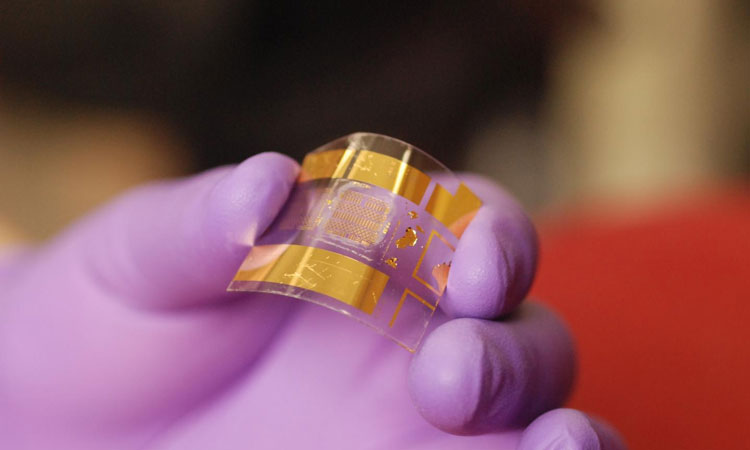Engineers at the University of Wisconsin-Madison unveiled the world’s most functional and flexible transistor, as well as a simple, fast, and inexpensive method to fabricate them. This type of advancement could lead to applications surrounding smart wireless technology, including wearable sensors and computers that can stretch, bend, and curve.

Image courtesy of Jung-Hun Seo, University at Buffalo, State University of New York.
As transistors are an essential aspect in modern electronics, this new development seeks to change a standard that has been set in place for the last two decades. The device is a Bipolar Complementary Metal Oxide Semiconductor (BiCMOS) thin-film transistor that combines two contrasting technologies, as well as speed, high current, and low power dissipation in the form of heat and wasted energy.
The result of the “mixed signal” devices with both analog and digital abilities delivers an ideal chip for modern electronics like smartphones.
“The industry standard is very good,” said Zhenqiang (Jack) Ma, the Lynn H. Matthias Professor and Vilas Distinguished Achievement Professor of electrical and computer engineering at UW-Madison. “Now we can do the same things with our transistor — but it can bend.”
Creating BiCMOS flexible transistors typically takes several months, especially because of the numbers of steps involved. However, with Ma’s new approach, the team was able to cut the time down drastically by fabricating the flexible electronics on a single-crystal silicon nanomembrane on a solitary piece of bendable plastic.
“In [the] industry, they need to finish these in three months,” said Ma. “We finished it in a week.”
Source: eeDesignIt
Advertisement
Learn more about Electronic Products Magazine





